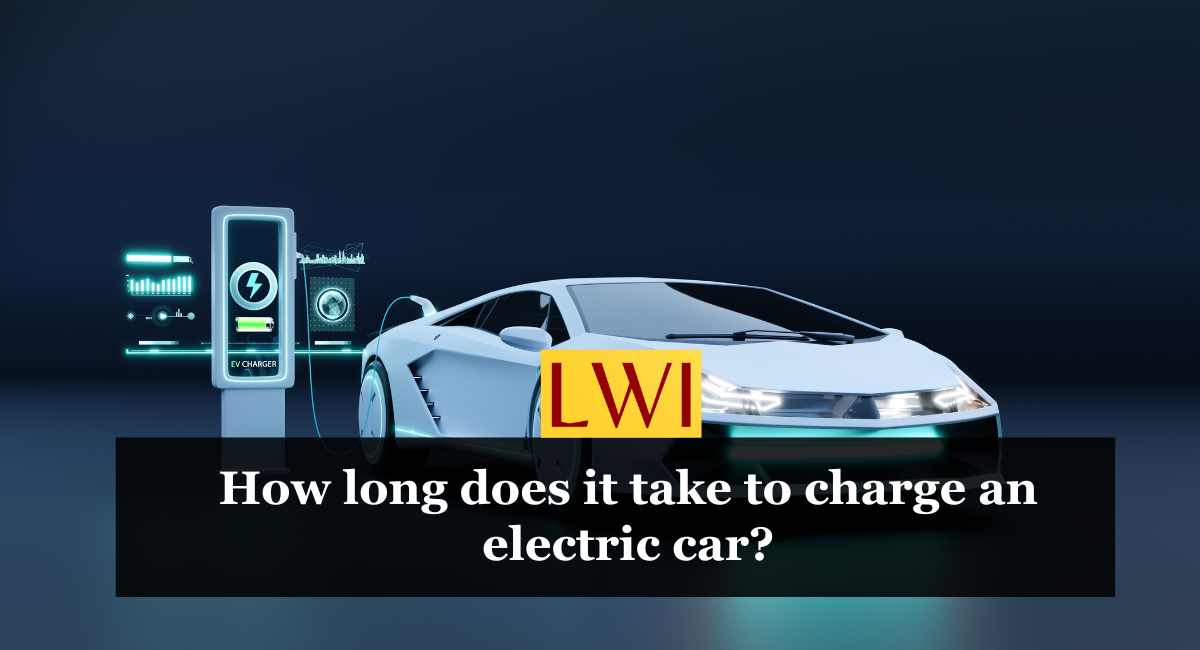Electric cars are becoming increasingly popular, and the previous worries about range anxiety diminish as modern electric vehicles provide more mileage per charge than most individuals typically require for a single trip.
However, the speed at which devices can be charged is becoming increasingly important since no one wants to wait an hour for adequate power to continue. This brings us to a straightforward question: How much time does it take to charge an electric vehicle?
The response, although it may be exasperating, is that it varies. Charging rates vary based on the charger, whether it’s an electric car charger at your residence or one of the numerous electric car charging stations, the vehicle, and even the weather conditions.
However, a few fundamental principles can significantly reduce the mystery around charging speeds.
Overview of electric vehicle charging speed
Without delving into a detailed scientific explanation (where someone will likely scrutinize every word), comparing chargers to gas pumps is an excellent approach to describing charging speeds.
The bigger the pipe and nozzle, the greater the amount of gasoline, or in this case, electrons that can pass through. Volts represent the force propelling electrons through the circuit, whereas amps indicate the number of electrons in motion.
Chargers, particularly home chargers with a higher amp rating, charge quicker than chargers with lesser amperage.
Electric vehicles with the quickest charging times
Electric vehicles with the most fantastic range in 2024: Most affordable electric automobiles available in the United States
The gas pump comparison is also valid when examining public charges to comprehend their functioning.
Chargers promote kilowatts, or kW, as a unit of measurement for charging speed. DC rapid chargers provide speeds of 350 kW in certain instances, while Level 1 and Level 2 chargers only provide 1.4 kW and up to 7.6 kW, respectively.
However, the vehicle has a maximum capacity for gasoline, which restricts the total amount that can be accepted at once, thereby limiting the flow. This also applies to electric vehicles.
High-speed chargers – up to 350 kW or more – can quickly increase the driving range of electric cars, but only models equipped with 800-volt capabilities can fully utilize the high charging speed.
Levels of Charging
Electric car charging is now divided into three stages. The initial two options can be used at home. Still, the expenses and physical space needed to install and utilize DC fast chargers are significant, so they are primarily found in public spaces or commercial establishments.
Standard Charging
Level 1 charging is the least fast and requires a regular household outlet. The 120-volt outlets are very slow when charging any EV, providing only 3-5 miles of range per hour.
Without requiring you to perform the calculations, it could take several days for a vehicle to recharge a car with a bigger battery capacity completely.
Most individuals will have a significantly more enjoyable experience utilizing Level 2 and should only resort to Level 1 as a last resort. Level 1 charging is a suitable option for plug-in hybrid owners due to their smaller battery size and quicker charge periods.
Level 2 Charging
Level 2 charging, for most individuals in the United States, refers to using 100-amp 240-volt cabling, which may need expensive service wiring upgrades for the entire house.
However, the majority of people will believe that the benefits outweigh the cost. Level 2 charging can restore approximately 30 miles of range per hour or more, depending on the charger’s amperage.
You may need to install a new service line to achieve those speeds at home, which can significantly raise prices.
High-speed Charging
DC fast charging, also known as Level 3 or Supercharging by Tesla, provides the fastest charging speeds. In certain situations, they can offer a range increase of up to 20 miles per minute, allowing certain electric vehicles to recharge from 10% to 80% battery capacity in 30 minutes or less.
Because of the necessary electrical supply and high installation and operating costs, Level 3 chargers are usually not placed in residential areas.
Guide for charging electric vehicles
Individuals in Southern California may not be overly concerned about snow and cold, but winter weather is a fact for many others. We know that low temperatures can significantly reduce the range of an electric vehicle, sometimes by up to 40%.
This is mainly due to the use of climate controls and heating. Charging is delayed when the weather is cold, mainly because of the vehicle’s software and protection mechanisms.
Charging in very low temperatures can lead to damage with lithium plating and other problems, so it is advisable to refrain from quick charging. Many electric vehicles’ computers decrease the charging speed to avoid this issue.
Thus, you might observe a notable decrease in the distance you can recover during comparable charging durations in hot and cold weather conditions. Some car manufacturers, like Tesla, have battery thermal conditioning devices or pre-heaters that prepare the battery for safe charging.
However, if uncertain, you should refrain from fast charging in cold weather.
What does 800-volt architecture mean?
Consider volts as the force that propels electricity through the circuit. Increased “pressure” results in a higher electron flow, leading to quicker charging times. The issue is that most electric vehicles currently have 400-volt charging systems, which are not as fast.
However, many new cars are adopting 800-volt designs, so charging speeds are expected to increase for all vehicles.
Automobiles equipped with 800-volt design are often more effective, resulting in greater mileage per kilowatt-hour.
Simultaneously, the system utilizes a reduced current, necessitating thinner cables and less copper in electric motors. This results in a lighter car that has improved regenerative braking capabilities.

